EC1
1
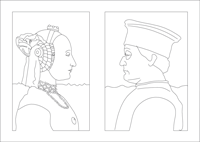 Fig. 2.1. Battista Sforza and Federico da Montefeltro.
Fig. 2.1. Battista Sforza and Federico da Montefeltro.
To chapter 2, paragraph 3
Federico had written to Francesco Sforza, duke of Milan, that his eye and his son, Buonconte (d. 1458), had been taken by God as retribution for his own sins: "Io conosco che per li peccati miei el nostro Signore Dio me ha tolto un occhio et questio figliolo che era la vita mia et el contentamente mio et de i suditi miei" (Pernis and Adams, Montefeltro and Malatesta, 76). Martin Kemp has suggested that this injury, coupled with Alberti's recommendation to painters to obscure "unpleasing" features, might have been the source of Piero della Francesca's famous portrayal of the duke's profile: "Apelles painted the portrait of Antigonus only from the side of his face away from his bad eye" (Alberti, On Painting, trans. Grayson, 2.40; for Kemp's note, 99n43). This is a sensible supposition, though such profiles were commonly used for casting medals and minting coins, a subject of particular interest to humanists. Earlier in his career, Piero had portrayed Sigismondo Malatesta in pure profile on several occasions. One work in particular, located in the Tempio Malatestiana (designed by Alberti in the early 1450s), presents (Si)gismondo kneeling before the Holy Roman Emperor, who had knighted both Federico (in Mantova) and Sigismondo en route to meet with the new pope, Eugenius IV. This painting includes an idealized cityscape circumscribed in an oculus.
EC2
2
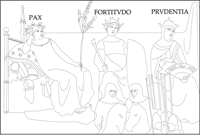 Fig. 3.5. Detail of the virtues from the Allegory of Good Government.
Fig. 3.5. Detail of the virtues from the Allegory of Good Government.
To chapter 3, paragraph 17Prudence, the abbreviated form of providence (pro+videre—to foresee), represents one's capacity to learn from past experiences to envision problems before they occur, thereby informing one's strategies and actions in the present. For this reason, Prudence was perceived a virtue vital to success in political, military, and architectural endeavors. In the Urbino palace, the snakes of Prudence (representing the wisdom of Asclepius and Hippocrates) are depicted in the Door of the Virtues. Several images in the studioli point to the significance(s) of the virtue for Federico. Beneath the miniature studiolo at the Urbino studiolo's east wall are three tapers, one ignited, recalling a detail from Ambrogio Lorenzetti's The Virtues of Good Government. In this fresco, Prudence is among the personified virtues essential for "The Common Good"; she is shown holding an object surmounted by the words "Past, Present, Future." Although Randolph Starn describes this object as a water clock, closer inspection identifies three flames issuing forth (Ambrogio Lorenzetti, 53). The figure of Prudence points to the brightest, which corresponds to "Present." According to Virginia Tenzer, the fact that only one taper at Urbino is lit suggests that this virtue is enacted in the present, at the chiasmus of the past and future, and "that prudence is a habit of mind exercised by Federico" (Iconography, 198). In matters of governance, as Machiavelli notes, "all wise princes should . . . consider not only present but also future discords and diligently guard against them; for being foreseen they can easily be remedied, but if one waits till they are at hand, the medicine is no longer in time as the malady has become incurable" (The Prince, 43). Such a discordant malady could have easily afflicted Urbino following Federico's death. By appointing Ottaviano regent of the dukedom and Guidobaldo's principal tutor, Federico sought a smooth transference of power to a young and vulnerable prince. If not prudently handled, this transition could have been turbulent. It would not have been unusual for the time if Antonio da Montefeltro, an elder ("natural") son and well-trained military captain, were to challenge the young prince's authority. Early in his own childhood, Federico had been banished from the Urbino court by his father's new wife, Caterina Colonna, who had recently given birth to Oddantonio, his younger, legitimate brother. Perhaps by reflecting on his youth, Federico neither dispossessed Antonio nor kept him from court, which might have precipitated bitterness.
EC3
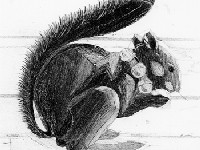 Fig. 3.6. Collared squirrel, Urbino studiolo. Fig. 3.6. Collared squirrel, Urbino studiolo.To chapter 3, paragraph 21 |
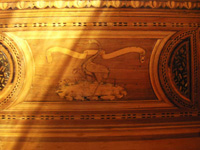 Fig. 3.7. Crane, Gubbio studiolo. Fig. 3.7. Crane, Gubbio studiolo.To chapter 3, paragraph 21 |
3Recalling Wolfgang Liebenwein's narrative for the east wall, the squirrel represents the prudent prince who spends each moment actively pro+viding for the future well-being of his state. Machiavelli observes that a well-fortified, well-pro+visioned city is less willingly attacked by outsiders (The Prince, 76). As a city unto itself, the ducal palace at Urbino incorporated a network of subterranean chambers containing vast supplies of food and water, accommodations, and stables for its military forces, as well as occupations (including metalworking) that would provide Urbino's citizens with employment in case of lengthy sieges. The capacity to foresee events is an ability for which Federico gained particular renown: his success as a military commander offered, in Vespasiano da Bisticci's words, "proof of the value of an active chief in settling the plan of campaign, and how on him depends victory and the safety of the state" (Vespasian Memoirs, 90). Prudence was essential in a military leader to orchestrate and enact offensive and defensive strategies. The more precisely one might prognosticate events (by various forms of reconnaissance, including astrology and an open dialogue with one's perceived adversaries), the more successfully one could plan effectively and strengthen the resolve of one's allies, a notoriously difficult proposition for the quattrocento condottiere. Akin to the image of the squirrel, the impresa of the crane, found in both studioli, signifies a leader who "keeps his head up" to forewarn his subjects. From Bartolomeo Platina's On Right Pleasure (5.4.91), we learn the following: "Choosing a leader whom they follow, cranes come to us from the eastern sea by a long migration. They have at the end of the line some who keep the flock in order by voice. They also keep watches by night, holding a pebble in one raised foot so that, if it is relaxed in sleep and inactive, it will proclaim the guard's negligence. . . . [T]he leader, with his head stretched upward, keeps a lookout, and gives forewarning." Luciano Cheles has also observed that "on both sides of the [Carte de trionfi] card devoted to 'Geometria,' a wading bird that may well be a crane is represented in the foreground of the landscape," a feature that he suggests "hints at surveying" (Studiolo of Urbino, 81). This signification would have been particularly appropriate to a leader whose territories were rapidly expanding and who was an enthusiastic patron of the military, civic, and artistic potentials of perspective. Federico's employment of artillery, architects, surveyors, perspective, historical precedents, and prudently conceived battle plans were essential to what contemporaries described as "l'arte del Duca d'Urbino" (Tommasoli, La vita di Federico da Montefeltro, 348n142). Cheles notes also that the crane appears (later) in Ripa's Iconologia as an attribute of "Consideratione," a term that means, literally, to think with the stars (Studiolo of Urbino, 80; see also Illich, H2O, 11–15).
EC4
4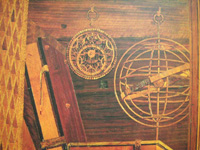 Fig. 3.8. Astrolabe and armillary sphere, Urbino studiolo.
Fig. 3.8. Astrolabe and armillary sphere, Urbino studiolo.
To chapter 3, paragraph 25The revision of the calendar preoccupied Federico's colleagues and court astronomers. Nicholas of Cusa, among the first to take into account the differences of longitude for various meridians, had unsuccessfully attempted a reform at the Council of Basel in the 1430s. Regiomontanus, secretary to Cardinal Bessarion and connected to Urbino by various personages, was summoned by Pope Sixtus IV in 1475 to revise the calendar but died shortly after arriving in Rome. (His works in the ducal library include a calendar in his native German and an Almanac.) In 1513, Paul of Middleburg (astronomer to both Federico and Guidobaldo) successfully petitioned the Holy See to hold a special council devoted to these matters. His treatise Paulina de recta Paschae celebratione, deeply indebted to Roger Bacon's Opus majus of 1267, compelled his friend Copernicus to expand research on the sun and moon, resulting in the development of the heliocentric system. Paul's treatise was also central to John Dee's proposal for calendar reformation to Queen Elizabeth in 1582. Dee had visited Urbino in 1563, before his publication of a foreword to the English translation of Euclid's Elements. During his stay, he copied several manuscripts from the ducal library, including Piero della Francesca's treatise on the five regular solids. Piero's notions of universal structure were reenvisioned in the late 16th century by Johannes Kepler, who perceived the nesting of the regular ("Platonic") solids to represent the concentric orbits of the celestial bodies. The significance of astronomy and astrology and the influence of Federico da Montefeltro is underscored by Marsilio Ficino in a 1492 letter to Paul of Middleburg: "This century, like a golden age, has restored to light the liberal arts, which were almost extinct: grammar, poetry, rhetoric, painting, sculpture, architecture, music, the ancient singing of songs to the Orphic lyre. . . . Achieving what has been honored among the ancients, but almost forgotten since, the age has joined wisdom with eloquence, and prudence with the military art, and this most strikingly in Federigo, Duke of Urbino, as if proclaimed in the presence of Pallas herself, and it has made his son and his brothers the heirs of his virtue. In you also, my dear Paul, this century appears to have perfected astronomy, and in Florence it has recalled the platonic teaching from darkness into light. In Germany in our times have been invented the instruments for printing books, and those tables in which in a single hour (if I may speak thus) the whole face of the heavens for an entire century is revealed, and one may mention also the Florentine machine which shows the daily motions of the heavens" (Ross and McLaughlin, eds., Portable Renaissance Reader, 79). For an illuminating discussion of the astrolabe and armillary sphere in the Urbino studiolo, their uses and significance, see David King, "Astrolabe Depicted."
EC5
5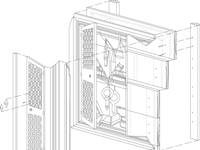 Fig. 3.9. Exploded axonometric of assembly of an intarsia panel in the Gubbio studiolo.
Fig. 3.9. Exploded axonometric of assembly of an intarsia panel in the Gubbio studiolo.
To chapter3, paragraph 27In the Art of Building, Alberti stresses the importance of prudence in architectural practice: "It is the mark of considerable experience to have so thoroughly thought out everything and determined it in the mind beforehand, that in the course of construction, or on completion of the work, one is not forced to admit, 'I wish I had not done this: I would have preferred it done otherwise.' And the penalty to be paid for poorly constructed work is surprisingly heavy: with time we eventually realise the rashness and foolishness of any move not considered carefully enough at the outset; if the work is not taken down or amended, the mistake committed is the source of continual grievance, and if it is demolished, we are tormented at the thought of the loss and expense, and full of remorse for the lightness and fickleness of our opinion" (2.1.33; also 9.9.313). To avoid such torment and remorse, Francesco di Giorgio reinforces Vitruvius's advice (De architectura, 1.1.1) that an architect should keep two notions foremost in the mind—fabrica (fabrication) and raciocinatione (reasoning). "Fabrication," writes di Giorgio, "concerns the practical use and goal of a project," whereas "reasoning is the demonstration of things carried out in a theoretically sound manner before the project is actually made" (Martini, I trattati di architettura, 37–38). Although translated variously as technology (Granger) and theory (Morgan), for Vitruvius, Alberti, and di Giorgio the term ratiocinatione represented an inward, dialogical process of reasoning—fundamental to the art of rhetoric—that would be rendered visible by the lineamenti of architectural drawings and models and realized through fabrication. Federico held architects, artisans, and the mechanical arts in the highest esteem, owing to their direct influence on his military success and their contributions to the princely magnificentia of his fortresses and palaces. During war or peace, the discipline of architecture was central to the duke's modus operandi, elegantly enlacing the fortunes of patron, architect, and artisan. According to Vespasiano, Federico's success at the Battle of Volterra in 1472 was attributed "entirely to his foresight; because, on account of the nature of the site, it could never have been effected by force of arms alone" (Vespasian Memoirs, 92). In addition to the strategic use of artillery, Federico directed several Florentine master carpenters placed under his command to construct temporary bastions that were critical to the successful siege. One of the carpenters, Francesco di Giovanni, carried out large architectural commissions, including carving and intarsia, that were often shared with other workshops, such as those of Baccio and Piero Pontelli and Benedetto and Giuliano da Maiano. Following the victory, Federico commissioned the Pontelli and Maiano workshops for the intarsia work of the doors and studioli of the Montefeltro palaces.
EC6
 Fig. 3.10. Mirror, Gubbio studiolo. Fig. 3.10. Mirror, Gubbio studiolo.To chapter 3, paragraph 29 |
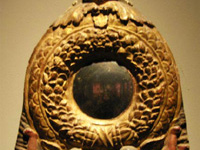 Fig. 3.11. Convex mirror and surround fabricated by the Maiano brothers, 1480. Fig. 3.11. Convex mirror and surround fabricated by the Maiano brothers, 1480.To chapter 3, paragraph 29 |
6Mirrors, ancient icons for reflective prudence, are represented in the intarsia of both studioli. Nicholas of Cusa describes Providence as the gaze of God that he beholds "as in a mirror, in an icon, in a riddle" (De visione Dei, 17). A popular quattrocento exercise of rhetorical amplification translated paradigma, the Greek term for king, as "speculum," emphasizing that the prince should be an exemplary mirror for his people (Labalme, Bernardo Giustiniani, 46). Reference to this popular trope, known as the "Mirror of Princes," is evident at Gubbio in the round mirror bearing Duke Guidobaldo's initials. Mirrors were also believed to possess magical qualities, and their fabrication was secretively guarded. Brunelleschi used a mirror for his empirical experiments in perspective with the Baptistry of St. John in Florence. Although this mirror is generally believed to have been flat and rectangular, like the sheet of glass suspended in the Urbino studiolo, David Hockney has demonstrated (Secret Knowledge, 205–210) that a round concave mirror, such as those fabricated in Bruges and Ghent, would also have functioned adequately, if by a different process. While the wood grain of the intarsia renders it impossible to determine whether the round mirror at Gubbio is concave or convex, it is worth noting that Justus, who painted the portraits in both studioli, hailed from Ghent. Also, concave (or "burning") mirrors were also well documented in medieval treatises on optics, as well as in a work attributed to Archimedes, a copy of which had belonged to Piero della Francesca and became part of the ducal library (I.V. #286). On the other hand, one must also consider a framed convex lens (ca. 1480), currently part of the Lehman Collection of the Metropolitan Museum of New York, attributed to the Maiano workshop in the same period during which they fabricated the Gubbio studiolo.
EC7
7 Fig. 4.1. Double Portrait of Federico and Guidobaldo da Montefeltro.
Fig. 4.1. Double Portrait of Federico and Guidobaldo da Montefeltro.
To chapter 4, paragraph 1The quattrocento experienced an increased valuation of and investment in worldly pursuits, including the products of the mechanical arts. In his treatise on the Florentine family, I libri della famiglia, Alberti echoes Vitruvius in describing the reciprocity between material works and the workings of the mind: "There are . . . activities in which the powers of body and mind function together to bring profit. Such are the occupations of painters, sculptors, musicians and others like them. All these ways of making a living, since they depend mainly on our personal powers, are what you call arts, and do not go down in shipwrecks but swim away with our naked selves. They keep us company all our lives and feed and maintain our name and fame" (145). Traditionally, the intangible skills and tangible products of the arts were considered essential to personal and communal remembrance. In the Symposium, Plato offers artistic production as an admirable means of begetting progeny that contributes to the achievement of virtue and immortality. The official portrait of Duke Federico with Prince Guidobaldo, painted in 1476 by Pedro Berreguete, embodies both forms of "begetting." In a posture recalling the tradition of patrilineal recognition in ancient Rome, Guidobaldo stands at the right knee of his father, holding the baton of command in his right hand (Onians, Origins of European Thought, 178–86).
EC8
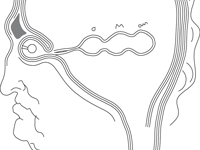 Fig. 4.6. Section of human head after Leonardo. Fig. 4.6. Section of human head after Leonardo.To chapter 4, paragraph 13 |
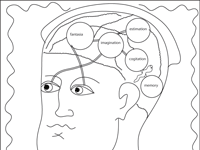 Fig. 4.7. Diagram of human mind after Galen. Fig. 4.7. Diagram of human mind after Galen.To chapter 4, paragraph 13 |
 Fig. 4.8. Diagram of human mind after Lokhorst and Kaitaro's model of Costa ben Luca. Fig. 4.8. Diagram of human mind after Lokhorst and Kaitaro's model of Costa ben Luca.To chapter 4, paragraph 13 |
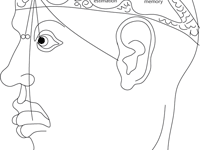 Fig. 4.9. Diagram of human mind after Avicenna. Fig. 4.9. Diagram of human mind after Avicenna.To chapter 4, paragraph 13 |
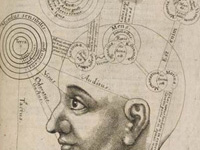 Fig. 4.10. Diagram of the human mind. Fig. 4.10. Diagram of the human mind.To chapter 4, paragraph 13 |
|
8What were the postures conducive for thought? According to Alberti, "The movements of the soul are made known by movements of the body," a statement conveying the essence of several views of cognitive mechanics (De pictura, trans. Spencer, 77). Like distinctions of human intelligence and educational disciplines (the number of liberal and mechanical arts), theories about the faculties of mental activity, their location in the brain and their interaction with the senses and the soul have been fluid and ever-shifting. The Christian Syrian physician Costa ben Luca (864–923) believed that one should stand erect with neck extended in order to recollect and stoop slightly in order to cogitate. Why? There are two parts of the brain, Costa asserted, anterior and posterior; the front portion is further divided into phantasia and imagination. These two ventricles connect to each other and to the hind portion, memoria, by way of a common passageway in the middle of the brain. This central area was considered by many (including Leonardo, fig. 4.6) to be the sensus communis (common sense), a meeting place for the senses and the vital spirit of the soul, which arrives from the heart. In Costa's view, then, there are four "ventricles" in the brain. Sensations are received, he continues, by delicate pulses from the net below the brain (the rete mirabile), propelling the vital spirit (pneuma) into the front, where it is purified by passing back and forth between phantasia and imagination. While moving between these ventricles, this spirit passes through the common space, where it is "digested" and converted into a "finer and clearer spirit" by mixture with the "power of the soul." This pneumatic model would be further developed by Avicenna and embedded in the writings of Ficino and Castiglione.
9In the common space between the front and back of the brain Costa describes a valve, referred to by Galen (fig. 4.7) as the vermis (worm/serpent), which regulates the flow of pneuma to and from the memory. According to Costa's model, then, one should stand erect with neck extended when recollecting, a posture said to raise the vermis and open the foramen, allowing spirits to flow from the front into the hind portion of the brain (fig. 4.8. left). "If the foramen is not open," Costa stresses, "there is no flow of spirit to the posterior part of the brain and the person does not remember and will not respond to the questions he is asked. This also explains," he continues, "why someone who wants to remember something lifts his head and tilts it backwards and looks upwards with staring eyes" (Lokhorst and Kaitaro, "Descartes' Theory," 8). To think or form speculations, by contrast, one should stoop slightly, a motion that lowers the vermis and closes the foramen, allowing the spirit to "rest, become stronger and increase its power to think and understand (fig. 4.8, right). This explains," Costa reasons, "why someone who thinks bends his head towards the earth and watches it intently and stoops forward, as if he were writing some document and drawing some figures on it" (9).
10Illustrations of the brain, Lina Bolzoni observes, were a common reference point in medical and mnemonic treatises: the boundaries of these maps were in constant flux, reflecting constant change in views of the structure and workings of the mind (Gallery of Memory, 130–39). Where Galen and Costa locate the vermis at the brain's posterior, for example, Avicenna places it at the front, between phantasia/imagination and the central common space (fig. 4.9). Where Costa describes four ventricles in the brain, Avicenna includes five, by dividing the central common space into the faculties of cogitation and estimation. Subsequent physician-philosophers simplified the brain divisions to three main chambers, placing imagination to the fore, memory to the aft, and cogitation between. This is the arrangement illustrated in Leonardo's sections of the human head and described by Publicius, who adds: "Between the posterior and anterior ventricles [Hippocrates] located a middle organ, the pineal gland. When we apply ourselves to seeking something with memory, this pineal gland is opened to provide access to the animate spirit psychical pneuma from the anterior to the posterior ventricle. For this reason they say that Proclus, a professor of the medical art, said that the posterior ventricle is more noble. For only when the psychical pneuma is serene, lucid, and clear does it cross over to the posterior ventricle" (Publicius, Art of Memory, 28). Publicius's substitution of the pineal gland for the vermis—an opinion held by the "ignorant and stupid," according to Galen (Lokhorst and Kaitaro, "Descartes' Theory," 7)—is a notion that may be traced back through a translation by Constantine the African to Ibn al-Jazzar (900–980), whose views are otherwise consistent with Costa's. Ibn al-Jazzar describes the pineal gland as resembling a worm, although as Lokhorst and Kaitaro illustrate, Costa had regarded the vermis and pineal gland as separate entities. Although the publication of Vesalius's anatomical dissections in 1543 would disprove many of these theories, including the role of the vermis, we find an elaboration of Avicenna's arrangement—with vermis intact at the fore—in the early 17th century illustrations of Robert Fludd's treatises (fig. 4.10). For Descartes's innovative contributions to this matter, see Lokhorst and Kaitaro, "Descartes' Theory," and Crary, Techniques of the Observer.
EC9
11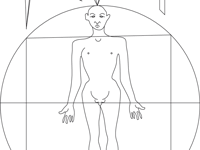 Fig. 4.11. Instrumental demonstration of rectitude.
Fig. 4.11. Instrumental demonstration of rectitude.
To chapter 4, paragraph 16From Aristotle through Hugh of St. Victor to Castiglione, ethical prudence is expressed by such terms as ordo (source of order and orthodoxy) and recto (right). Hence, recto (right judgment, right action, and right pleasure) was placed in contrast to sinistra (left) and its sinister connotations. Right habits, ingrained in mind and body by exercise, facilitated right judgment by procuring one's ability to respond to a given circumstance promptly and accordingly. Without agile recollection of memory's store, it was believed, one could not confidently foresee (pro+videre) the ramifications of one's decisions and actions, and thus one could not judge "rightly." Habit, meanwhile, is intimately interlaced with habitat: both are derived from a combination of habere, to have, and abitare, to dwell. The Italian equivalent, abito, has been described as "a special condition or habitual quality of the mind which manifests itself outwardly in a special costume or equally habitual behaviour, which in turn reacts upon the disposition and moral attitude of the individual" (Castiglione, Book of the Courtier, 351n123). In a comparison of clothing and writing, Petrarch notes: "I much prefer that my style [stilus, pen] be my own, uncultivated and rude, but made to fit, as a garment, to the measure of my mind, rather than to someone else's . . . each [writer] must develop and keep his own [style] lest . . . by dressing grotesquely in others' clothes . . . we may be ridiculed" (Familiares, 22.2). In addition to its connection to habitation, habit is intimately related to recollection. Carruthers observes: "The ability to recollect is natural to everyone, but the procedure itself is formed by habitus, training and practice. . . . Defining memory as habitus makes it the key linking term between knowledge and action, conceiving of good and doing it. Memory is an essential treasure house for both the intellect and virtuous action" (Book of Memory, 64).
EC10
12 Fig. 4.12. Perspectival "butterfly," after missing figure at Gubbio studiolo.
Fig. 4.12. Perspectival "butterfly," after missing figure at Gubbio studiolo.
To chapter 4, paragraph 17One of the primary purposes of education, according to Aristotle, is to avoid idleness by the correct use of leisure. To instill "civilized habits" Aristotle recommends drawing, which teaches one "to be observant of physical beauty," and music, specifying the even-tempered Dorian mode as the most suitable for the education of youth (Aristotle, Politics, 8.3, 1342a28: Lydian is also recommended). The "butterfly" depicted in a (lost) panel below the window at Gubbio (fig. 4.12) was used in perspective and astronomical observation. It is difficult to regard the number and variety of musical instruments in the studioli without considering their association to the muses. In the seventh century, Isidore of Seville had defined music as an "art of modulation consisting of tone and song, called music by derivation from the Muses. . . . [I]t was fabled by the poets that the Muses were the daughters of Jove and Memory. Unless sounds are remembered by man, they perish, for they cannot be written down" (Isidore of Seville, Etymologiae, I.V. #79, cited by Levenson, Measure by Measure, 44; see also Ong, Orality and Literacy, 32. Leisure, music and the muses are discussed further in chapter 6).
EC11
13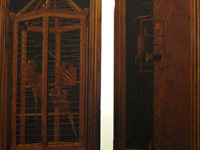 Fig. 4.13. Papagalli and mechanical clock, Urbino studiolo.
Fig. 4.13. Papagalli and mechanical clock, Urbino studiolo.
To chapter 4, paragraph 18
Extended Caption 16Birds and cages figure prominently in both Montefeltro studioli, evoking multiple associations. At Urbino, a birdcage containing two parrots or parakeets (the term papagallo encompasses both) is found on the left-facing door leading to the duke's bedchambers, evocatively twinned with the mechanical clock found on the adjacent, right-facing door. Luciano Cheles has observed that the parrot is an attribute of Mercury, the god of eloquence: "It is tempting to argue that Rhetoric has been symbolized . . . by the twin motif of the cage with the parrots, and the clock. Perhaps it is no coincidence that in his influential manual for painters, Iconologia, Cesare Ripa described Eloquence as a woman with three main attributes: a book, an hourglass and a parrot. Ripa wrote the first version of his manual in the late 16th century, but the idea of coupling a time-measuring device to a parrot to signify the well-regulated art of Eloquence may have already been 'in the air,' in uncodified form, in the 15th century. It is equally likely that the designer of the programme associated two obvious individual symbols to create a new metaphor" (Studiolo of Urbino, 60n24). Another set of meanings for the papagalli and clock was pointed out to the author by Roberto Mantovani, curator of the Historical Collection of Scientific Instruments preserved at the Physics Laboratory of the University of Urbino. According to Mantovani, it was also "in the air" that a caged bird represented the ability to hold one's tongue, especially regarding political matters, and that the clock referred to prayer (by the regular chiming of the prayer bell). As we will see in chapter 4, many other significances were attributed to the papagalli and their cages.
EC12
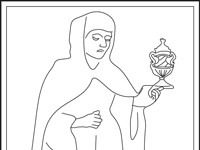 Fig. 4.15. Gramatica XXI after traditional Tarocchi di Mantegna. Fig. 4.15. Gramatica XXI after traditional Tarocchi di Mantegna.To chapter 4, paragraph 21 |
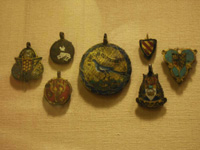 Fig. 4.16. Late quattrocento emblems worn with armor. Fig. 4.16. Late quattrocento emblems worn with armor.To chapter 4, paragraph 21 |
14As early as 1447, when he returned to Urbino to assist Federico's governance, Ottaviano degli Ubaldini had earned the epithet "Prince of Astrology." While in Milan (ca. 1432–47), Ottaviano frequented the court of the Visconti, where he became deeply interested in astrology and the occult. During this time (1440), the famous Carte di trionfi were painted for Duke Filippo Maria Visconti. Also known as the Tarocchi di Mantegna, the design of these cards has been misattributed to Andrea Mantegna, whose name appears to have become associated with the cards during the 16th century. Each "card" presented an allegorical image for use in "play" and memory work, elaborating on the tradition of the trionfi (triumphs or trumps) of Petrarch, in which each image is said to "triumph" over its precedent. The Urbino court's interest in this work of Petrarch's is pronounced: three copies of De remedio utriusque Fortunae were present in the ducal library: I.V. #58 (bound with Lactantius's Firmiami, Augustine's City of God, Boethius's De consolatione, and Salomonis's Moralium), 556 and CXLIX.53. Bernardi Glicini's Expositio in triumphos Petrarcae is I.V. #CLII.2.
15The Carte di trionfi comprises fifty images, grouped into five decades. The first includes the archetypal social stations: beggar, servant, artisan, merchant, gentleman, knight, duke, king, emperor, and (female) pope. The second decade includes the nine Muses and Apollo. The liberal arts form the third decade, beginning with Grammar (fig. 4.15) and adding poetry, philosophy and theology to the traditional seven. The fourth decade is dedicated to the sun, time, the cosmos, and the virtues (cardinal first, then theological), and the final group consists of celestial bodies (and pagan gods), concluding with the "octava sfera," "primo mobile," and "prima causa." The play of the cards offered a recombinatorial scheme for memory, exercising one's genius at generating narrative associations between visual and verbal figures. The influence of these open-ended images and other recondite forms of cerebral play on courts such as Urbino's has been discussed by Luciano Cheles, among others (Studiolo of Urbino, 82–87), and continues into the cinquecento. Castiglione recounts: "Often 'devices' (imprese), as we now call them, were displayed; in discussing which there was wonderful diversion" (Book of the Courtier, 12). Castiglione's work was first printed in 1528 at the Aldine Press in Venice, six years after "devices" were gathered under the rubric Emblematum libellus by Andreas Alciati in Milan. Alciati's enormously popular book spawned numerous imitations, including Cesare Ripa's Iconografie (1603). Leondard Opdycke notes, "These devices [imprese] so much in vogue during the 16th century in Italy, were the 'inventions' which Giovio (ca. 1480) says 'the great lords and noble cavaliers of our time like to wear on their armour, caparisons and banners, to signify a part of their generous thoughts.' [fig. 4.16] They consisted of a figure or picture, and a motto nearly always in Latin" (Book of the Courtier, 329n40). These figures supplied patrons and designers with ideas for architectural ornament. In Rovilli's 1550 Latin version of Alciati's treatise, emblems are said to furnish "no vain picture which may feed the eyes": "For I say this is their use, that as often as any one may wish to assign fulness [sic] to empty things, ornament to bare things, speech to dumb things, and reason to senseless things, he may from a little book of Emblems, as from an excellently well-prepared hand book, have what he may be able to impress upon the walls of houses, on windows of glass, on tapestry, on hangings, on tablets, vases, ensigns, seals, garments, the table, the couch, the arms, the sword, and lastly, furniture of every kind" (Alciati's Emblems, 6). For more on the "play" of memory and its influence on cinquecento compositional invention, see chapter 3 of Bolzoni's Gallery of Memory, "Memory Games."
EC13
16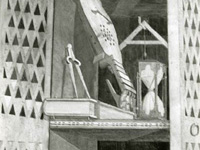 Fig. 4.17. Ingenioq cabinet, Gubbio studiolo.
Fig. 4.17. Ingenioq cabinet, Gubbio studiolo.
To chapter 4, paragraph 21Two of the three parts of rhetorical ability described by Cicero in De oratore (1.25)—doctrina (theory) and ingenio (talent)—are present in Veterani's dystich at Gubbio. The third ability, exercitatio or imitatio (practice), is in fact the exhortatory objective of the dystich and—recalling the fixing gazes of Federico and the goddess Rhetoric—of the Gubbio studiolo in general. On closer observation, we notice that INGENIOQ is located directly above the cabinet containing an architect's set square/level, an apparent compositional corroboration between Veterani's poem and Francesco di Giorgio's design that reflects a deeper reciprocity between architecture and rhetoric. In the first chapter of the first book of De architectura, Vitruvius asserts that natural talent requires the discipline provided by precepts: "Neither talent without instruction nor instruction without talent can produce the perfect craftsman" (De architectura, 1.1.3). A combination of ingenium and discipline likewise marks the ideal orator. Cicero notes: "Oratory is an art [like architecture] in the loose sense that its successes can be codified and taught; but the chief virtue of the orator is inborn, ingenium, from which sharpness of mind arise sharpness in invention, richness in exposition and ornament, firm and long-lasting memory" (Cicero De oratore 1.xxiii; Summers, Judgment of Sense, 130n14).
EC14
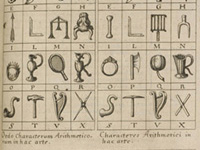 Fig. 4.18. Alphabetic mnemonics. Fig. 4.18. Alphabetic mnemonics.To chapter 4, paragraph 26 |
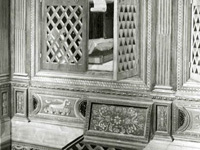 Fig. 4.19. Cabinet with hunting horn, Gubbio studiolo. Fig. 4.19. Cabinet with hunting horn, Gubbio studiolo.To chapter 4, paragraph 26 |
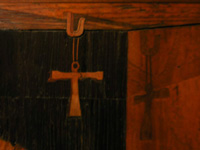 Fig. 4.20. Tau-shaped tuning key, Gubbio studiolo. Fig. 4.20. Tau-shaped tuning key, Gubbio studiolo.To chapter 4, paragraph 26 |
 Fig. 4.21. Cipher of Gramatica. Fig. 4.21. Cipher of Gramatica.To chapter 4, paragraph 26 |
17The Gubbio studiolo houses an array of memory images. Among those items shown hanging from a nail, itself a mnemotechnique (Publicius, Art of Memory, 17), we find alphamnemonic ciphers and "tokens of things." Publicius includes a mnemonic alphabet, later recycled by Johannes Romberch in Congestorium artificiose memorie (1533) and emulated by Robert Fludd in Utriusque cosmic maioris scilicet et minoris metaphysica (1621), that evokes comparison to several items in the Urbino studiolo (fig. 4.18). The timbre, astrolabe, and Order of the Garter, for example, would have been suitable as the letter "O." Such imagery is more prevalent at Gubbio, where the following items are suspended from a hook: a C-shaped horn of Cornu (fig. 4.19), an O-shaped timbre, a tau-shaped tuning key (fig. 4.20), the A-shaped set square/level of Architectura, and the O-shaped round mirror. It seems quite plausible that there are further (as yet undetected) items at Gubbio and Urbino that were used for alphamnemonics owing to their visual character or word associations they initiated. For example, as Mary Carruthers and Henry Bayerle note: "In a passage described in detail by Yates, Romberch produced an image in which Grammar is personified by a woman holding two birds and with the images on her chest representing the letters C, O, N, and T from the pictorial alphabet [fig. 4.21]. The two birds, taken from another pictorial alphabet, are a pie (pica) which calls to mind the letter P and thus predicatio, and an eagle (aquila) which represents A and thus applicatio. The pictorial letters call to mind a third element of grammar, continentia" (Publicius, Art of Memory, 2). As examples of "tokens of things," Publicius includes such occupational images as the architect's set square/level and the astronomer's astrolabe and those evoking metaphor, such as the "sword of justice" (Art of Memory, 26). Poetic figures were also highly effective. Publicius offers Ovid's characterization of Sleep (Metamorphoses 11.593) as a worthy example: "He made for her a dark house, from which all barking of dogs, and also every wakeful winged creature is absent. The descent and rustling sound of waters, poppies, and a bed made of ebony incite the reclining god [herself] to sleep" (Art of Memory, 20).
EC15
18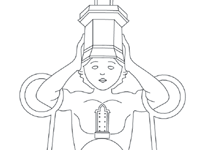 Fig. 4.25. Superimposition of fortress and human body.
Fig. 4.25. Superimposition of fortress and human body.
To chapter 4, paragraph 29In the duke's biography, Vespasiano da Bisticci expounds on Federico's love for architecture: "As to architecture it may be said that no one of his age, high or low, knew it so thoroughly. We may see in the buildings he constructed, the grand style and the due measurement and proportion, especially in his palace, which has no superior amongst the buildings of the time, none so well considered, or so full of fine things. Though he had his architects about him, he always first realised the design and then explained the proportions and all else; indeed, to hear him discourse thereanent, it would seem that his chief talent lay in this art; so well he knew how to expound and carry out its principles. He built not only palaces and the like, but many fortresses in his dominions of construction much stronger than those of old time; for some, which were built too high, the Duke made much lower, knowing that the fire of the bombards would not then hurt them" (Vespasian Memoirs, 100). In his translation of and commentary on Plato's De regno, dedicated to Federico in 1482, Marsilio Ficino draws a comparison between the objectives of an architect and a ruler. Like an architect, who reunites the various materials and parts of a building into an organic whole, the ruler combines "the diverse interests of the inhabitants of his kingdom in order to lead them to a common goal, the well-being of their country" (Pernis, "Ficino's Platonism and the Court of Urbino," 121–22).
EC16
 Fig. 4.27. Papagalli and cage, Urbino studiolo. Fig. 4.27. Papagalli and cage, Urbino studiolo.To chapter 4, paragraph 39 |
 Fig. 4.28. Papagallo and birdcage, Gubbio studiolo. Fig. 4.28. Papagallo and birdcage, Gubbio studiolo.To chapter 4, paragraph 39 |
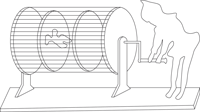 Fig. 4.29. Image of a spinning birdcage. Fig. 4.29. Image of a spinning birdcage.To chapter 4, paragraph 39 |
|
19Bees and birds have long represented thoughts, so hives and birdcages like those in both studioli have represented houses of memory. In Plato's Theatetus the birdcage and its contents provide a metaphor for knowledge and the well-trained memory necessary to maintain order among the birdlike thoughts gathered in the mind. For Hippocrates and Plato the mind was not limited to the brain; it encompassed as well the innards, or splanchna, held in the "cagelike" breast. Hidden from plain view, splanchna needed to be opened and inspected to disclose their contents. They are the very butterflies in our stomachs. Animal entrails, for example, were believed to contain obscure messages from the gods, requiring the practice of haruspices for their decipherment. Human splanchna were also subjected to intense scrutiny. Ruth Padel recounts an ancient Greek drinking song that urges one to divide another's breast and examine his mind (nous) to determine whether he is a friend or foe (In and Out of the Mind, 14). An Aesopic fable, commented on by the Byzantine scholar Eustathius (I.V. graec. 132), relates that Prometheus fitted the human breast with gates to render our thoughts and feelings impregnable to others. Vitruvius laments this obscurity, calling for windows in the human breast (pectora fenestrata) that might render one's thoughts "open for inspection" (De architectura, 3.Preface.1). With such windows, he contends, greater certainty would be achieved in judging those talents that are otherwise concealed (pectoribus ingeniis). Our modern-day perception of the eyes as the "windows of the soul" harkens to this mind-body tradition. From Leonardo's point of view, however, the eyes were window- (or velo-) like because they provided the soul with two means of egress from the body, not because they permitted others to see into oneself.
EC17
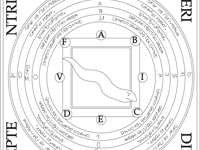 Fig. 4.40. A concentric combinatorial memory wheel. Fig. 4.40. A concentric combinatorial memory wheel.To chapter 4, paragraph 63 |
 Fig. 4.41. Astrolabe and armillary sphere, Urbino studiolo. Fig. 4.41. Astrolabe and armillary sphere, Urbino studiolo.To chapter 4, paragraph 63 |
20One of Publicius's wheels includes a vermiform serpent as its central volvelle rather than moveable rings, a detail perhaps conceived as a metonymic means to open and close the vermis valve in the brain, activating cogitation and recollection. The combinatorial mechanisms attributed to Raymond Lull seem to predate him by Arabic science as well as the ancient Romans and Greeks. In turn, they prefigure those elaborated by Robert Fludd, Giordano Bruno, Charles Babbage, and the most recent nanochip. The astrolabe operated under a similar mechanical principal. Our mechanical prowess always frames, it seems, how we think we think. Johannes Romberch interpreted Publicius's wheel as a combinatorial form of a pictorial alphabet, including the image in his treatise along with an explanation of its usefulness in remembering the first letters of any phrase or saying (Publicius, Art of Memory, 7). For more on the literary influence these mechanisms, see chapter 2, "Trees of Knowledge and Rhetorical Machines," in Bolzoni, Gallery of Memory. Also, the vermiform constellation Draco, which traditionally occupies the polar position in the heavens of the northern hemisphere, encircles the center of a late quattrocento tapestry depicting the heavens as a wheel of fortune and an enormous astrolabe. This tapestry was woven in Tournai, the source of Montefeltro's tapestries, for the Toledo Cathedral (see Circa 1492, fig. 111). Doctors and barbers used wheel diagrams like a 1486 volvelle from the guild book of the Barber Surgeons of York (also in Circa 1492) to determine propitious occasions for surgery. The accompanying image of the zodiac man displays the parts of the body and their governing signs, indicating to the doctor-barber those parts "which should not be operated on or subjected to blood-letting when the moon was located in the sign ruling over it" (Circa 1492, 220). The cardinal directions on Publicius's mnemonic diagram include septentrio, ortus, meridies, and occasus. Etymological analysis of these terms yields the following: Septentrio represents the seven stars of the constellation of the Great Bear (Ursa Major) and is considered "north." Meridies represents the position of the sun at midpoint, or midday—"south" in the Northern Hemisphere. Ortus arrives from the Greek orthos, a technical, scientific root meaning "straight," or "right." Ortive is derived from ortiv-us, and ortus, or "rising," suggesting that ortus is "east." Ortive also bears mathematical significance: the phrase "numeration ortive" signifies "that part of arithmetic which deals with multiplication, division" as distinguished from "numeration original," which represents addition and subtraction. Publicius entitles the section on the workings of memory wheels as "The Facilitation of the Memory by the Addition of Letters." Occasus derives from occident-em, "setting," and signifies a westerly "falling, going down." The related term occasion represents "falling towards, juncture, opportunity, cause. I.1. A falling together or juncture of circumstances favourable or suitable to an end or purpose, an opportunity. An opportunity of attacking—a 'handle' against a person. II.5. A juncture of circumstances requiring or calling for an action; necessity or need arising from circumstances" (Oxford English Dictionary, s.v. occasion). Occasion thus signified an opportunity for piercing or cutting, by arrow, hoe, surgeon's knife, or builder's shovel.
21A provocative example of generative combinatorics at the court of Urbino has been proposed by David King, who suggests that the engraving on an astrolabe commissioned by Regiomontanus for Cardinal Bessarion in 1462 offers a means to decode Piero's Flagellation ("The Geometry of Piero's Flagellation of Christ and the Geometry of the Epigram on the Astrolabe of Regiomontanus that Inspired it," presented October 11, 2006 at the First International Conference of the Centro Internazionale di Studi "Urbino e la Prospettiva"). King holds that the individual characters in an engraving on the astrolabe, when recombined, reference primary characters in the painting: these protagonists represent, in turn, multiple personages—contemporary and historical—as stand-ins for various narratives and "lessons." Although modern scholarship might prefer a watertight demonstration of King's thesis, especially seeing that the letters in the (Latin) engraving could generate any number of names, the essence of his argument is sensible. In a culture given to codifying messages as entertainment and self-preservation, the multiplicity of significances in a work of art is complementary to the mnemonic practices and mechanical devices used at the time. Like the studioli in general, this points to Piero's Flagellation as a work of and for meditation, with many—not one—pertinent interpretations.
EC18
22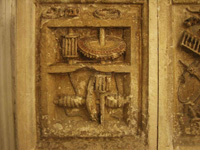 Fig. 4.42. Triple hoist mechanism carved by Ambrogio Barrocci after drawing by Francesco di Giorgio.
Fig. 4.42. Triple hoist mechanism carved by Ambrogio Barrocci after drawing by Francesco di Giorgio.
To chapter 4, paragraph 64In addition to dignified public and private edifices, a quattrocento architect such as di Giorgio was called on to design theatrical machinery and temporary constructs for such civic celebrations as the wedding of Duke Federico's second daughter, Elisabetta, to Roberto Malatesta, the son of Sigismondo (d. 1468). Pernis describes the elaborate procession of June 25, 1475: "Federico and Isabetta entered Rimini by the Porta di San Bartolo, an ancient Roman triumphal arch. Positioned at the top of the arch were men dressed as Romans, reciting poetry as Federico and Isabetta entered. They proceeded to Piazza del Foro, along a street covered with carpets. A second arch had been constructed at the entrance to the square at the very spot where Caesar himself stopped to address his soldiers. From this arch as well, men dressed as ancient Roman senators, and consuls recited poetry. They were accompanied by 'Diana' and her nymphs, 'Caesar' holding a book and 'Hercules' with a mace. In the center stood a throne covered with lavish fabrics. When Federico arrived, the 'Romans' stood and 'Caesar' gestured to the empty throne, as if inviting the Lord of Urbino, a 15th-century combination of Hercules and Caesar, to be seated. A third arch supported a choir of singing angels on a rotating platform" (Pernis and Adams, Montefeltro and Malatesta, 55). The choreography of this celebration reflects an intricate interplay of private and communal memory, in which urban architecture provided a theater for events that augured the health of a city and its citizens. On this specific occasion, reconciliation of the neighboring Montefeltro and Malatesta families benefited both Urbino and Rimini. Recalling the ancient Roman triumphal procession, the theatrical architecture incorporated ancient and permanent with temporary and fantastic constructs—including masques, rotating stages, and such edible confections as cakes "in the shape of a fountain, the Arch of Augustus, Castel Sismondo, and the [ideal] design of the Tempio Malatestiano" (Montefeltro and Malatesta, 57). Such an event (and the machinery it required) offered ample opportunity for an architect to display his "careful foresight" and the resourcefulness of his "highly trained intelligence," as Vitruvius relates in his preface to the final book of De architectura.
EC19
23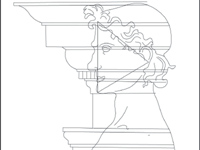 Fig. 4.45. Superimposition of human and building profiles.
Fig. 4.45. Superimposition of human and building profiles.
To chapter 4, paragraph 68The transparent relation between bodies and buildings, as represented by Francesco di Giorgio. For Alberti, buildings—like bodily habits—unavoidably express the character of their patrons. Through his familiarity with the dwellings of Federico and Sigismondo, Alberti appears to have based his recommendations for the palaces of a prince and tyrant quite literally on the respective personalities of the two condottieri: "A royal palace [such as Federico's palace at Urbino] should be sited in the city center, should be of easy access, and should be gracefully decorated, elegant, and refined, rather than ostentatious. But that of a tyrant, being [like Sigismondo's] a fortress rather than a house, should be positioned where it is neither inside nor outside the city. Further, whereas a royal dwelling might be sited next to a showground, a temple, or the houses of noblemen, that of a tyrant should be set well back on all sides from any buildings" (Alberti, Art of Building, 5.3.121).
EC20
24 Fig. 4.48. Piazza del Foro, Rimini.
Fig. 4.48. Piazza del Foro, Rimini.
To chapter 4, paragraph 75Piazza del Foro, Rimini. During the Malatesta-Montefeltro wedding in 1475, the ceremonial movement of the participants and audience among the urban landmarks of Rimini plied a new weave of communal memory into the city's fabric. "Patterned movement, as in a procession, is a basic memory foundation; it 'places' us individually within a community as an imago agens within a memory location. The principles governing these processions are mnemonically sound: they consist of images moving within locations, locations spaced distinctly apart and in a clear relationship to one another . . . having the qualities that make them both strike and fix in the mind. Participant and audience together make up these processions, and remember them viscerally, the way we remember how to ride a bicycle, or how to dance" (Carruthers, Craft of Thought, 54–57). With its symbolic references, the Montefeltro-Malatesta marriage procession exemplifies an act of communal remembering and forgetting engineered by poets, artists, and architects. As the ceremony proceeded through the city streets, ancient heroes were called on to sweep aside centuries of enmity: the marriage of the Houses of Malatesta and Montefeltro also represented the union of Rimini and Urbino.
EC21
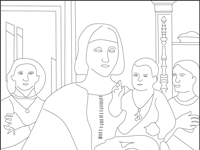 Fig. 5.4 The Madonna of Senigallia, after Piero della Francesca. Fig. 5.4 The Madonna of Senigallia, after Piero della Francesca.To chapter 5, paragraph 5 |
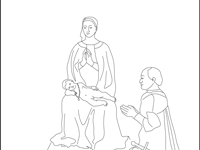 Fig. 5.5. Detail from Piero della Francesca's Brera Altarpiece. Fig. 5.5. Detail from Piero della Francesca's Brera Altarpiece.To chapter 5, paragraph 5 |
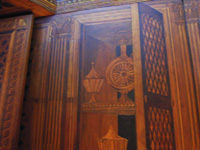 Fig. 5.6. Glass mirror and vessels, Urbino studiolo. Fig. 5.6. Glass mirror and vessels, Urbino studiolo.To chapter 5, paragraph 5 |
|
25In Piero della Francesca's Madonna of Senigallia (fig. 5.4) the Christ child is shown wearing a necklace with a coral pendant—the same necklace and pendant depicted in the Brera Altarpiece (fig. 5.5). Bearing in mind the Jesus-Guidobaldo conflation, it is plausible that the young prince wore this necklace as a talisman against melancholy, as Ficino would recommend. Previous to Ficino's interest in the geometric nature of heavenly rays, Alexander de Ales, an author specifically cited among Federico's philosophical and religious interests (I.V. #164–67: see Vespasiano da Bisticci, Vespasian Memoirs, 102), had considered the works of Euclid as invaluable theoretical equipment for determining a proportional relation between terrestrial and purgatorial time (LeGoff, Medieval Imagination, 74). The Franciscan Duns Scotus applied Euclidean geometry to further theological speculation, in proving the existence of angels (Pérez-Gómez, "Glass Architecture," 262). In the Urbino studiolo, Scotus's portrait is in the immediate vicinity of Euclid's. In a related matter, perhaps, the rectangular mirror suspended in the Urbino studiolo evokes Prudence, like the round mirror at Gubbio. However, the Urbino mirror (fig. 5.6) has one particularly marvelous characteristic: it is transparent. The light "refracted" by the "material" of the mirror distorts the fluting of the pilaster seen behind. If this object is indeed a mirror, it is not of polished metal, stone, or even foil-backed Venetian glass. Rather, it appears to be made of a crystalline substance similar to that of a geometric figure suspended in the late quattrocento portrait of Fra Luca Pacioli, painted by Jacopo de' Barbari. The practice of scrying, or crystal-gazing, would be practiced by the English magus John Dee (and the charlatan Edward Kelley) after Dee's visit to Urbino in 1563 and the publication of his Mathematicall Praeface to Euclid's Elements. Is it possible, then, that the mirror-tablet at Urbino reflects the speculative aspect of Prudence, providing a key to divinatory practices by Federico's astrologers?
EC22
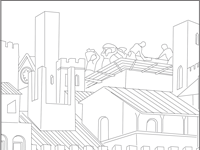 Fig. 6.14. Detail of The Effects of Good Government. Fig. 6.14. Detail of The Effects of Good Government.To chapter 6, paragraph 11 |
 Fig. 6.15. Cabinet with hunting horn, Gubbio studiolo. Fig. 6.15. Cabinet with hunting horn, Gubbio studiolo.To chapter 6, paragraph 11 |
 Fig. 6.16. Tau-shaped tuning key, Gubbio studiolo. Fig. 6.16. Tau-shaped tuning key, Gubbio studiolo.To chapter 6, paragraph 11 |
|
26The Franciscan monk San Bernardino da Siena (1380–1444), canonized in 1450 by Pope Nicholas V, delivered sermons in the vernacular that frequently employed imagery from well-known works of art. In 1427, Bernardino used frescoes painted by Ambrogio Lorenzetti to illustrate a series of homilies preached to lay audiences in the Campo di Siena (Starn, Ambrogio Lorenzetti, 74). Located in the Sala dei Nove of Siena's Palazzo Pubblico, Lorenzetti's cycle (1338–40) includes allegories of "The Good City Republic" and "The City-State under Tyranny," separated by "The Virtues of Good Government." As its central image, "The Virtues" features personifications of Justice and the Virtues as an allegory for the city's health. The fruits of just and virtuous government are represented in "The Good City Republic," in which peace and prosperity are reflected in the bustle of artisans and merchants, a wedding ceremony, and ongoing architectural construction (fig. 6.14). By contrast, without justice and its attendant virtues, citizens are faced with "The City-State under Tyranny," a dystopia of misery and oppression. Several items in the Gubbio studiolo underscore Montefeltro devotion to the Franciscans. Raggio (Gubbio Studiolo, 141) has pointed out the similarity between the hunting horn and a horn believed to have belonged to St. Francis (fig. 6.15). The harp's tuning key, hung from its own hook, is a likely reference to the Franciscan tau as well as an alphamnemonic for the letter "T" (fig. 6.16).
EC23
 Fig. 6.23. Triple hoist mechanism carving. Fig. 6.23. Triple hoist mechanism carving.To chapter 6, paragraph 22 |
 Fig. 6.24. "Unfinished" façade of Urbino's ducal palace. Fig. 6.24. "Unfinished" façade of Urbino's ducal palace.To chapter 6, paragraph 22 |
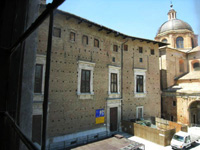 Fig. 6.25. The second "wing" of the entry façade. Fig. 6.25. The second "wing" of the entry façade.To chapter 6, paragraph 22 |
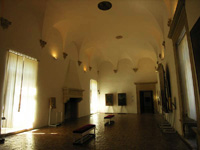 Fig. 6.26. Sala del Conversazione. Fig. 6.26. Sala del Conversazione.To chapter 6, paragraph 22 |
27In his dedication page for the Divina proportione (1497/1509), Fra Luca Pacioli praises Federico da Montefeltro for the machines and military instruments represented in the divine stone(s) of his dignified palace (degno palaço). Like di Giorgio, who emphasized the importance of the quadrivium for architecture, Pacioli declared that the defense of a republic was not possible without knowledge of arithmetic, geometry, and proportion, since all artillery instruments and military machines are the products of the discipline of mathematics. Included (by name) in Pacioli's dedication are the masons, stonecutters, and sculptors from his hometown of Borgo San Sepolcro—a town not far from Urbino that was birthplace also to his mentor, Piero della Francesca. The evenings described by Castiglione in The Book of the Courtier took place in the Sala della Conversazione (fig. 6.26), located behind the two large windows at left, on the piano nobile.
EC24
28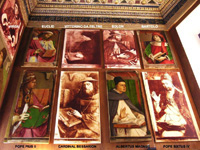 Fig. 6.54. Cardinal Bessarion, among the illustrious men in the south wall of the Urbino studiolo.
Fig. 6.54. Cardinal Bessarion, among the illustrious men in the south wall of the Urbino studiolo.
To chapter 6, paragraph 89The encomium for Cardinal Bessarion's portrait (fig. 6.54) states: "Bessarioni, Graeci Latini[que] conventus pacificatori, ob summam gravitatem doctrinaeq[ue] excellentiam, Fed[ericus] amico sapientiss[imo] optimoq[ue] posuit" (To Bessarion, the peacemaker of the Greco-Latin Conference, and wisest and best of friends, for his outstanding authority and excellence of teaching, Federico placed this) (Cheles, Studiolo of Urbino, 95). In 1438, Bessarion arrived in Italy with his teacher, Gemisthus Plethon, to participate in the Greco-Latin Conference. Unlike Pletho, Bessarion remained in Italy (although Plethon eventually returned to Italy, posthumously). Curious note: a portrait of Bessarion at the Academy of Fine Arts in Venice is protected by a special encasement designed by the Venetian architect Carlo Scarpa (1906–78). Technically, Bessarion was a man from Byzantium who arrived in Venice by way of Greece. In his epitaph, Scarpa described himself by these very words (Zambonini, "Process and Theme in the Work of Carlo Scarpa").
EC25
 Fig. 6.59. Bench along palace façade. Fig. 6.59. Bench along palace façade.To chapter 6, paragraph 101 |
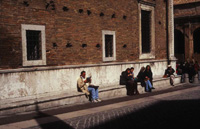 Fig. 6.60. Palace bench, continued. Fig. 6.60. Palace bench, continued.To chapter 6, paragraph 101 |
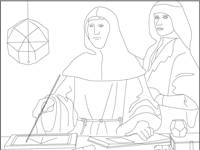 Fig. 6.61. Portrait of Fra Luca Pacioli. Fig. 6.61. Portrait of Fra Luca Pacioli.To chapter 6, paragraph 101 |
To chapter 6, paragraph 101 |
29In the second part of Divina proportione, Fra Luca Pacioli urges that geometric proportions are essential to ensure the meaningful ornamentation of buildings with finely carved stone. Why, one might wonder, were exactly 72 tablets set into the façade of the ducal palace? This is especially curious because the bench does not terminate within the embrace of the "winged" entry court but continues for a distance around the corner, as if to fulfill a preconceived program. In the same years that Francesco di Giorgio was employed at Urbino, Piero della Francesca composed the Tractatus de quinque corporibus regularibus, a treatise dedicated to Prince Guidobaldo that instructs its reader on the geometric construction of the regular (so-called Platonic) solids. In these figures all faces (and their angles) are equivalent, as are the angles at which all faces meet. Consequently, the Platonic solids represent "the dice of the universe," as Anne Tyng has observed; "with an equal chance of landing on any face . . . [they] are the basis of all the infinite variety of natural or synthetic matter" ("In Response," 81). Of the five such solids that exist, four symbolically represent the terrestrial elements. "The cube, rising from a quadrangular base, gives an impression of stability and is therefore identified with the earth; the octahedron, suspended between two opposite points and turned as on a lathe, conveys an image of great mobility, like the air; the icosahedron has the greatest number of sides, and its globular form most closely resembles a drop of water; the tetrahedron's pointed form suggests fire" (Pérez-Gómez, "Glass Architecture," 257).
30The fifth regular solid "discovered" by the ancient Greeks, the dodecahedron, represented the ether, or quintessence, of the cosmos, is composed of 12 pentagonal faces with exterior angles of 72 degrees. Pacioli "borrowed" Piero's treatise, appending an Italian translation to his own Divina proportione. In Jacopo de' Barbari's portrait of Pacioli (fig. 6.61), a wooden dodecahedron rests on a treatise the friar had dedicated to Duke Guidobaldo in 1494, the Suma de arithmetica geometria proportione et proportionalita. Pacioli describes the dodecahedron as the symbol of the quintessence because, as Pérez-Gómez observes , "its construction subsumes the other four and because it must be constructed from the 'divine proportion,' the golden-section ratio that is inherent in the pentagonal faces of the solid" ("Glass Architecture," 266). Astrophysicists and cosmologists have resorted to the term quintessence to describe the mysterious "dark matter" that appears to be accelerating the expansion of the universe. This is a fitting nomenclature, given that Pacioli defined the quintessence as a "celestial virtue which sustains [the other essences] in their being" ("Glass Architecture," 266).
31Returning to the golden section (or mean): this ratio yields the irrational "golden number"—approaching, but never reaching 0.618—by a sequence of numbers known as the Fibonacci series. "This sequence [is] generated arithmetically by adding the two previous numbers in the series: 1, 2, 3, 5, 8, 13 . . ." (Pérez-Gómez, "Piero's Lesson or the Ubiquitous Centre," 21). For example, 21 + 34 = 55 and 34/55 = 0.618. Although generally attributed to Leonardo Pisano, il Figlio di (son of) Bonacci, this proportion is also found in the measurements of the Ark of the Covenant (Exodus 25): 2.5 cubits long by 1.5 cubits wide and high (1.5/2.5 = 0.6). It is possible to close-pack the three simple solids—the tetrahedron, octahedron, and cube (all related by the square root of 22)—inside a cube. Using the divine proportion, a dodecahedron may be built-out from this cube. Similarly, an icosahedron may be constructed inside the octahedron, at the concentric heart of the entire ensemble. The divine proportion thus bridges between the three "simple" solids and the two "complex" solids. See Tyng, "Geometric Extensions," 81.
32There is another more prominently displayed polygonal solid in de' Barbari's portrait. Fabricated from glass and suspended from a wire, the 26-sided icosahexahedron is one of two geometric solids Pacioli declares as being important for architects (Divina proportione, 1.53, 54). The other, a hebdomicontadissaedron, represented in the treatise by Leonardo da Vinci, consists of 72 faces, with each hemisphere subdivided into three tiers of 12 faces (fig. 6.62: pl. 39, entitled the Septuagintaduarum basium vacuum). Pacioli's description of this figure concludes in a lengthy digression on its architectural usefulness for constructing vaults and domes, referring the reader to the Roman Pantheon and the contemporary Santa Maria delle Grazie in Milan (Pérez-Gómez, "Glass Architecture," 268). Curiously, the original version of Pacioli's treatise, dedicated to Duke Lodovico Sforza in 1497, was composed of 71 chapters, concluding with its colophon and the appendix of Leonardo's diagrams. Might Pacioli have used the 72 tablets as a mnemonic stratagem for the Divina proportione? It would have been consistent with late quattrocento thought-craft, since it was a number that was very much "in the air."
33This is particularly true at Urbino, in light of both the Montefeltro court's patronage of scholars who compared and conflated Judeo-Christian-Islamic ideas and its fascination with such "subtle" and "recondite" philosophers as Duns Scotus and Pietro d'Abano, who figure prominently in the studiolo, and also with such contemporary philosophers as Marsilio Ficino and Pico della Mirandola, whose Seventy-Two Conclusions were later presented in Rome in an ill-starred attempt to generate dialogue about shared forms of divine wisdom.
34Judaism, specifically the Old Testament, offers a font for the number 72. The oldest translation of the Hebrew Bible into Greek, the Septuagint, received its name from the 72 Jewish scholars who, according to tradition, had performed this translation for Ptolemy II in the third century bce. This version is still used, untranslated, in Greek Orthodoxy. Moreover, the kabbalistic practice of the Shemhamphorasch examines the letters comprising chapters 19–21 of Exodus 14, which were believed to yield a 72-lettered name of God and 72 permutations, each being the name of an angel. The mental image of 72 angels created by transliteration prompts a cross-reference to a curious observation Pérez-Gómez makes about the Divina proportione: "After commenting on mathematical contributions to the arts of war, Pacioli continues with a seamless narrative on the importance of mathematics in the subtle theological speculations of Duns Scotus, who proved the existence of angels through Euclidean geometry" ("Glass Architecture," 262).
35At first glance, the notion of "proving" the existence of angels by geometry may seem extremely abstract, as obscure and obfuscating as alchemy. But if by Neoplatonic belief stars were considered divine agencies, and if by humanist interpretation the sacred task of the Roman augur were translated to the role of the Christian priest, then the process of astrological divination and its place in human affairs is less opaque, at least at the court of Urbino: it is a cultural absorption of history into a new context, equipping humans to make decisions in the face of uncertainty. But how do angles prove the existence of angels? As distinguished from the ancient "images and locations" technique employed by the Dominicans, the concentric mnemonic wheels of Ramon Llull were calibrated to prove the existence of God; these were adopted by the Franciscans (such as Duns Scotus) for mnemonic, pedagogical, and meditational practices. By rotating the wheels to quantifiable angles, one recombined numbers and letters, generating rhetorical permutations (such as the names of God), and explaining divine causes for worldly phenomena. It is worth noting that astrolabes—such as those depicted in the Montefeltro studioli—were commonly subdivided into 72 five-degree gradients for astronomical observation and were among the group of machinae universitatis employed in medieval education and memory training (Carruthers, Book of Memory, 252). Slender reeds as these last few thoughts may be, they are consistent with the syncretic ethos cultivated by the Montefeltro court and the precarious balance it maintained between spiritual observance and occult speculation.
36Other derivations of 72 potentially significant for Urbino: Maria Pernis (Eagle and Elephant, 53) has observed that the number 36 (half of 72) was highly significant to the court of Urbino, figuring prominently in a dream that Battista Sforza had in April 1471. In this dream, the duchess gave birth to a phoenix, which after 36 days flew toward the sun. The dream was interpreted as an augur of the birth of a male successor to Federico and became central to Montefeltro mythology when, in January 1472, Battista Sforza gave birth to Guidobaldo da Montefeltro, who received his name in appreciation for the divine intercession of Ubaldo, patron saint of Gubbio. According to Pernis, the number 36 has astrological associations that "would have been known to Ottaviano. In astrology, the celestial circle was divided into 36 decans, or segments, corresponding in ancient Egypt to ten-day sequences of rising stars." Manilius, Astronomica, 86, fig. 23 (#I.V. 503, Manilius Boetius). It might also be noted that there are 36 weeks in a nine-month pregnancy.
EC26
37 Fig. 6.66. Albrecht Dürer's demonstration of perspectival composition.
Fig. 6.66. Albrecht Dürer's demonstration of perspectival composition.
To chapter 6, paragraph 113In the mid-14th century, the term counterpoint emerged to signify a compositional process by which, in general terms, one deliberately constructed pitch intervals (or proportions) among separate voices, note by note (punctus contra punctus). By 1412, in a treatise devoted to the subject, Prosdacimus de Baldemandis states that counterpoint had become concerned with melody against melody (cantus contra cantus). In the evolving notation of the musical score, this meant that a work was conceived "vertically," aligning pitch relations across the separate staves of multiple voices, as well as "horizontally," with consideration to the path of each individual melody. On a fundamental level, this secured that a composition could be appreciated at each frozen instant as well as over time, as it unravels. In a description of Johannes Tinctoris's musical glossary, composed in 1475, Alfred Mann emphasizes that "when [Tinctoris] speaks of measurement from point to point, he quite obviously has in mind an analogy with mathematical concepts, and his formulation suggests indeed the imagination and draftsmanship of the masters of optical perspective" (Mann, introduction to Johann Joseph Fux's Gradus ad Parnassum, viii). The orthography of the quattrocento musical score is akin to the reticulation of the velo, in which a view (prospettiva) was subdivided into quadrants of information that could more easily be translocated by an artisan from a sketch to a finished work, as Alberti recommends in De pictura. Although the velo was derived from the empirical experiments of Brunelleschi, a point well established, there are earlier commonplace examples of visioning techniques of which Alberti would have been quite aware, such as the reticulated memory technique described by Hugh of St. Victor. Manifest as a chessboard or perspectival velo, the grid was already an ancient mnemonic strategy at the conception of the studioli.
EC27
 Fig. 6.77. Order of the Garter, Gubbio studiolo. Fig. 6.77. Order of the Garter, Gubbio studiolo.To chapter 6, paragraph 145 |
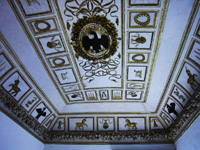 Fig. 6.78. Ceiling of quarters reserved for the King of England, in the Urbino ducal palace. Fig. 6.78. Ceiling of quarters reserved for the King of England, in the Urbino ducal palace.To chapter 6, paragraph 145 |
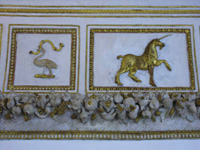 Fig. 6.79. Detail from ceiling of the King of England's quarters. Fig. 6.79. Detail from ceiling of the King of England's quarters.To chapter 6, paragraph 145 |
|
38The Order of the Garter was particularly significant to Federico, as evident in its frequent and prominent display in both studioli. After his mentor, Francesco Sforza, and his patron, Ferdinand of Aragon, king of Naples, who had petitioned on the duke's behalf, Federico was one of the few foreigners to join this exclusive group. Raggio observes that Edward IV was as pleased to "secure Federico's support for matters needing papal approval" as was Federico to have received such a distinguished, and exotic, honor (Gubbio Studiolo, 28). Federico's son, Guidobaldo, would be inducted into the order in 1506. Castiglione was sent to receive the award in proxy for the duke, and it is during his absence (an example of dissimulation, since he was in fact present) that the events described in The Book of the Courtier were said to have occurred. In the Urbino ducal palace, special quarters were designed for the King of England, decorated with intermingling Ostriches (Montefeltro) and Unicorns (England).
EC28
39 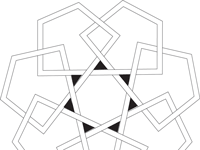 Fig. 6.82. Heptagonal diagram after figure at Urbino studiolo.
Fig. 6.82. Heptagonal diagram after figure at Urbino studiolo.
To chapter 6, paragraph 156The selection of a seven-pointed figure for its highly charged location was not taken lightly, especially knowing that Fra Carnivale, a painter in the Urbino court, had produced a drawing of an infinitely recursive octagonal figure whose sepia tones have been interpreted as preparatory for translation into intarsia. One can imagine a debate during the design of the Urbino studiolo over the respective merits of a seven- or eight-sided figure. The sevenfold geometric figure evokes numerical associations with various categories of knowledge, including the virtues and liberal arts, while its recursive line suggests the interdependence of all seven points, a notion consistent with the syncretic character of the Urbino court. Such interconnectivity is also consistent with the ancient astrobiological notion that each of the seven apertures of the human head was influenced by the seven celestial bodies (Sun, Moon, Mars, Mercury, Venus, Jupiter, and Saturn) and that the inward flow of these influences gathered in the sensus communis (common sense), where the human soul was believed to reside. Like the notion of the vermis, the common sense was a particularly "mobile" topic. While Aristotle and Alexander of Aphrodisias placed the soul in the arche of the heart, Hippocrates and Plato located the powers of perception and cognition in the brain. Avicenna, who linked Aristotle's heart with Plato's brain by the flow of pneuma, associated the common sense with phantasia in the front region of the brain. Later, Leonardo da Vinci's anatomical investigations discerned a hollow at the center of the skull that he believed to house the soul. Contemporaneously, the related notion of the hegemonikon is reflected by Fra Luca Pacioli's assertion in Divina proportione that the seven orifices of the head enable the human intellect to engage the external world (Pérez-Gómez, "Glass Architecture," 273). Regarded by the Stoic philosophers (and Leonardo) as a faculty of faculties, the hegemonikon offered a sevenfold model of the soul, comprising the five senses, a seminal principle (testicles), and the voice (tongue). The hegemonikon was believed to communicate with these seven parts through the pneuma, by which it "commands the anatomical mechanism of the body in response to the world flowing into it from the senses" (Summers, Judgment of Sense, 98). Regarding the visual pattern of the heptagonal figure at Urbino, it is worth considering Hugh of St. Victor's thoughts on the mnemonic potentials of geometry. Mary Carruthers relates: "In characterizing geometry, of all the seven liberal arts the one essential for a wise master-builder, he [Hugh] calls it 'well-spring of perceptions and source of sayings.' In other words, Hugh understood geometry, the science of 'forms,' to apply not just to the physical world but also to the cognitive one, to the fabricating of the schemes and patterns for thinking, for constructing the buildings of the mind from and within the sedes or locations of remembered 'things': sensus (perceptions, feelings, attitudes, judgments), dictiones (sayings and speakings), and facta ('events' as stories)" (Craft of Thought, 24). Subsequently, septenary figures preoccupied Pico della Mirandola (Heptaplus), Giulio Camillo, John Dee, and Joachim Frizius, who wrote an influential treatise on Rosicrucianism in 1626.
EC29
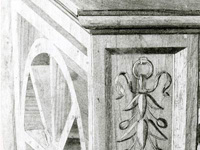 Fig. 6.83. Bench wheels, Urbino studiolo. Fig. 6.83. Bench wheels, Urbino studiolo.To chapter 6, paragraph 157 |
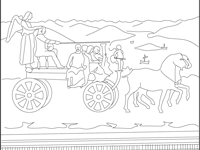 Fig. 6.84. Federico on biga with cardinal virtues. Fig. 6.84. Federico on biga with cardinal virtues.To chapter 6, paragraph 157 |
40Wheels. Wheels within wheels. Wheels for tracing the paths of stars and the wandering planets. Surgical wheels. Pedagogical wheels. Wheels for hoisting and building, for memory and rhetorical invention. Wheels of fortune. What other types of movement do the wheels at Urbino evoke? Equipped with hubs (as if for axles), the bench legs in the Urbino studiolo prompt several associations. In Cristofero Landino's Disputationes camaldulensis, the character of Lorenzo de' Medici refers to the metaphor of the biga—a wagon drawn by two horses (representing mind and body)—in his assertion that a leader should not abandon his responsibilities of governance and arms for speculative pursuits. Lorenzo then cites Federico as a leader who embodies a perfect synthesis of these desired qualities (Garin, ed., Prosatori latini, 763). Wagon wheels also conjure Petrarch's trionfi and the processional imagery depicted in the Sala dei Mesi of the d'Este, and Piero della Francesca's triumphal diptych of Federico and Battista (ca. 1472), in which the duke and duchess ride on horse- and unicorn-drawn chariots (fig. 6.84). The presence of the virtues in Piero's diptych, in which Federico is accompanied by the cardinal virtues while Battista Sforza is attended by the theological virtues, reflects a figural tradition in which virtù and fortuna are represented at times as allies and at others as adversaries. Their presence points also to a well-known Ciceronian phrase "Duce virtute comite Fortuna" (Fortune follows the tracks of Virtue), whose message is quite literally ingrained in the architecture of the studioli (Cicero Ad familiares 10.3, I.V. #CLVIII.27).
EC30
41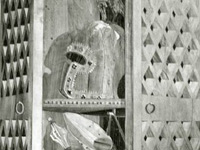 Fig. 6.89. Federico's helmet and scepter, Gubbio studiolo.
Fig. 6.89. Federico's helmet and scepter, Gubbio studiolo.
To chapter 6, paragraph 165Among its numerous associations, the image of a caged bird also resonates with the Neoplatonist view of the body as a temporary "cage" for the immortal soul, a notion shared by Leonardo da Vinci and Jacobus Publicius, who writes: "Buried in a dark prison through contact with this corporeal mass, memory is in need of new precepts and the supports of medical art, so that the portion of light has been taken away from her by union with the fleeting and fragile body, she will begin by means of new precepts and practice to shine far and wide with her accustomed light and former radiance" (Art of Memory, 10). By exercising the memory with "new precepts" and "medical art," Publicius and Marsilio Ficino believed, the soul was enabled to transcend its mortal coil and contemplate absolute beauty, as Diotima asserts in Plato's Symposium, and Pietro Bembo exhorts at the conclusion of Castiglione's Book of the Courtier. According to Ficino, "This is in fact what our dear Plato meant in the Timaeus, when he said that the soul, in frequent and intense contemplation of the divine, grows on such nourishment and becomes so powerful that it departs the body, and its body, left behind, seems to dissolve. It is as if it abandoned its bodily nature, fleeing sometimes with great agitation, and sometimes with none at all" (Book of Life, 1.4.7).